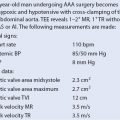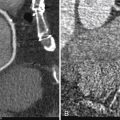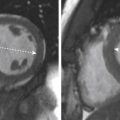Dental technology has changed greatly, and employing digital X-rays is among the most significant developments in recent years.
Modern imaging techniques have transformed how dental specialists diagnose, monitor, and treat oral health problems.
Digital X-rays have benefits for patients as well as doctors since they are quicker, provide better image quality, and exposes patients to less radiation than conventional film-based radiography.
What Are Digital Dental X-Rays?
Digital dental X-rays are diagnostic pictures made using electronic sensors in place of conventional photographic film.
On a computer display, these sensors create instant visible, clear photos. This lets dentists immediately evaluate the condition of teeth, bone, and supporting structures.
Digital dental X-rays come in two basic varieties:
Intraoral X-rays, obtained from inside the mouth. It offers clear images of particular teeth, roots, and the jawbone.
Extraoral X-rays provide wider perspectives of the skull, mandible, or temporomandibular joints (TMJ) from outside the mouth.
How Digital Dental X-Rays Work
“Digital X-ray systems use a small electronic sensor that is placed either inside or outside the patient’s mouth, depending on the type of image needed, ” explains my dentist at Metrotown.
The sensor captures the picture during the X-ray and promptly sends it to a computer. Once on the computer, the image can be magnified, enhanced, or adjusted for contrast and brightness to enable the dentist to notice even the tiniest indications of oral disease or damage.
This real-time imaging usually eliminates the need for chemical processing, allowing for quicker diagnosis and more effective treatment planning.
Benefits of Digital X-Rays
Faster Image Acquisition
Unlike conventional film X-rays, which necessitate laborious processing with chemicals, digital X-rays give almost instant results.
Viewing the image on a monitor within seconds enables dental specialists to shorten appointments and hasten the diagnostic process.
Reduced Radiation Exposure
One of the essential benefits of digital radiography is that it’s safe to use. Digital X-rays typically use 70–90% less radiation than conventional film X-rays.
For patients requiring regular imaging—such as those under orthodontic treatment or handling chronic dental conditions—this lower exposure is especially helpful.
Though film provides minimal radiation exposure, digital X-rays are a safer choice therefore perfect for expectant mothers, children, and people with medical problems.
Enhanced Image Quality and Diagnostic Accuracy
Digital sensors generate high-resolution images easily zoomed in on or improved for more clarity.
Dentists can concentrate on areas of interest, change contrast, and find problems including early-stage cavities, bone loss, or infections invisible on conventional film.
Improved patient outcomes, prompt treatments, and more precise diagnoses result from better image quality.
Streamlined Storage and Sharing
As part of a patient’s dental record, digital X-ray results are usually stored online. This facilitates the monitoring of changes over time and simplifies record-keeping.
It also enables quick sharing of images with other experts, insurance companies, or referral clinics, therefore helping to ensure coordinated care without the need of actual duplicates or additional imaging.
Sustainable and Affordable
Traditional film X-rays use many chemicals for development and frequently produce waste that could damage the environment.
Digital X-rays are a more sustainable alternative as they have no film, no chemical procedures, and generate no toxic waste.
Over time, using digital X-ray systems will reduce expenses associated with film, processing, and storage, therefore making them a wise choice for dental offices.
Clinical Applications of Digital Dental X-Rays
Digital X-rays have several uses and may become an essential component of regular dental care. It can be used for;
- Looking for cavities under fillings or between teeth.
- Keeping tabs on bone health in patients with periodontal disease.
- Determining any infections and assessing root canal anatomy.
- Organising dental implants, extractions, or orthodontic treatments.
- Monitoring kids’ tooth development and general growth
Early diagnosis is especially made possible by them, therefore enabling dentists to treat problems before they become more severe or expensive.
What Patients Can Expect
The digital X-ray experience is quick, comfortable, and non-invasive. Here’s what patients can typically expect:
- Positioning – A small sensor is usually placed in or near your mouth. Patients may be asked to bite down gently on a positioning device.
- Imaging – Then the technician activates the machine, capturing the image in a matter of seconds.
- Review – The image appears almost immediately on the screen, where it can be examined by your dentist and discussed in real time.
Most digital X-ray appointments take just a few minutes, and the process is painless and safe.
Why More Dentists Are Switching to Digital
Dental practices are increasingly moving away from film-based X-rays in favor of digital systems, not only for patient comfort and safety but also for clinical precision.
The high-definition pictures enable doctors to better prepare treatments and find issues sooner. Dentists may better monitor development throughout time and guarantee consistent, customized care by including digital files into patient records.
Digital systems also enhance workflow efficiency, therefore helping clinics to treat more patients while upholding top quality standards.
The Future of Dental Imaging
As technology advances, the field of dental radiology continues to innovate. Emerging tools such as cone beam computed tomography (CBCT) and 3D imaging may provide even more detailed anatomical views, helping dentists in complex procedures like implant placement or surgical planning.
Some practices are also exploring AI-powered diagnostics, which can assist in identifying abnormalities with even greater accuracy.
The integration of digital imaging with other technologies like intraoral cameras, CAD/CAM systems, and cloud-based records is creating a more connected and intelligent dental ecosystem.
Conclusion
Digital X-rays have redefined the standard of care in dentistry. They offer faster image processing, reduced radiation exposure, superior diagnostic capabilities, and better integration with digital health records.
These benefits make them a smart, safe, and sustainable choice for modern dental practices.
As patients become more informed and seek out efficient, high-quality care, digital radiography will continue to play a vital role in delivering exceptional dental experiences. Whether you’re a patient or a dental professional, embracing this technology is a step toward smarter oral healthcare.
Stay updated, free articles. Join our Telegram channel

Full access? Get Clinical Tree






